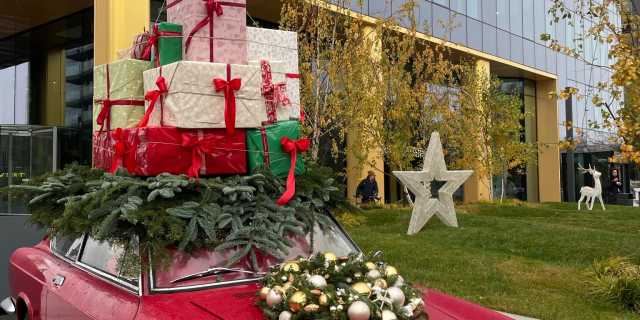Filaret Station
Opened in the autumn of 1869, with the inauguration of the first railway line of the United Principalities, Filaret was the first station in the Romanian capital, receiving this name after the hill on which it stands. The first train left the station on October 31, heading towards Giurgiu. Although it was used for many pompous events, its celebrity would fade with the inauguration of Târgoviștei Station (North Railway Station). It operated until 1960, when it was taken out of service, later becoming known as Filaret Bus Station. Today, the building is listed as a historic monument.
Northern Railway Station
The history of the Northern Station, originally called Târgoviștei Railway Station (named after Calea Târgoviștei, which later became Calea Griviței), has its beginnings in 1868 when, in the presence of King Carol I, the works were started and completed after four years. The U-shaped building was developed on a plot of land purchased from Zoe Racoviță, the niece of the boyar Dinicu Golescu. The station was inaugurated on September 13, 1872, with the commissioning of the railway line on the Roman-Galați-Bucharest-Pitești route. A milestone was reached in 1883, when the first train on an international route, the famous Orient Express, going from Paris to Constantinople, stopped at the station. The current name was adopted in 1888, the year in which a series of extension works were carried out, consisting of the construction of a central pavilion, completed by two towers. Another important milestone was reached in 1890 with the arrangement of the first telephone station of the Northern Station, with an initial number of 25 telephone lines. Over time, the goal has undergone a series of modernization works, in 1944 and between 1997-1999. Architectural plans include elements found at other stations in major Western European cities, such as Berlin and Leipzig.
Băneasa Train Station
Originally called Mogoșoaia Station, Băneasa Station was put into operation on November 17, 1886. It has been used over the years by important personalities, especially members of the Royal House, at key moments in the country's history, such as the funeral ceremony of King Carol I or the return of the royal family to Bucharest, on December 1, 1918. During the communist regime, it was considered a protocol station for the reception of heads of state and foreign officials. In order to provide them with the necessary comfort, the train station was equipped with an air conditioning system, a modern element for those times; the platform was also covered with a Persian rug to welcome visitors. Between 2007 and 2012 the station was decommissioned, later being used again by the royal family on special occasions, such as the death of King Michael I, to transport his body from Bucharest to Curtea de Argeș.
Obor Station
Also known as the Eastern Station, Obor Station dates back to 1903 and serves both passenger and freight transportation. The station building, arranged on three floors, was designed in neo-Romanian style, using as reference a portal with a stone arch. The special architecture determined its inclusion on the list of historical monuments. An important moment in its history was in 1935 when the station housed several freight cars in which part of the Romanian treasure had been transported after it had been recovered from the USSR.
Basarab Station
Used even today, Basarab Railway Station was built during the communist regime, as an extension of the most important railway junction in the country, to serve a series of short routes to cities near the city. These include Alexandria, Craiova, Ploiești, and Târgoviște. The works, carried out by the team of the engineer Mihai Gheorghiu according to the sketches of the architect Duiliu Marcu, were completed in 1959.
Among the smaller stations still in use in Bucharest are the New Bucharest Railway Station, Grivița, Titan Sud, Cățelu, and București Triaj. Other stations that operated on the territory of the city were Cotroceni, Herăstrău, Progresul, and Dealul Spirii.
Data for this article was obtained from historia.ro, adevarul.ro, evz.ro și wikipedia.org.
More on our blog
- One Insider
- Real estate: past, present and future
- Layout and style
- Real estate education
- Free time in Bucharest
- Tourist attractions in Bucharest
- The neighborhoods of Bucharest
Read also






